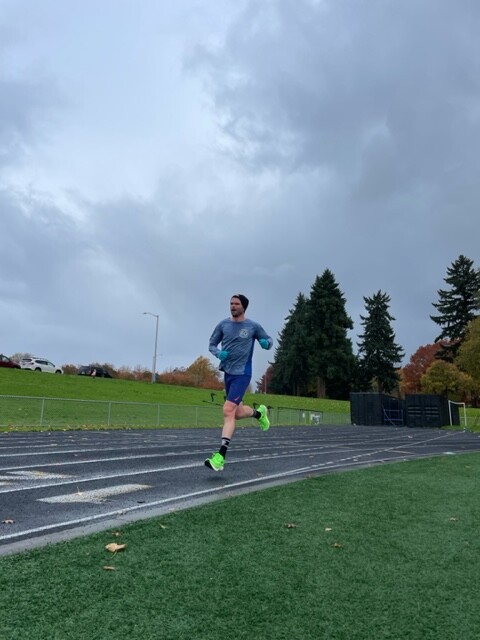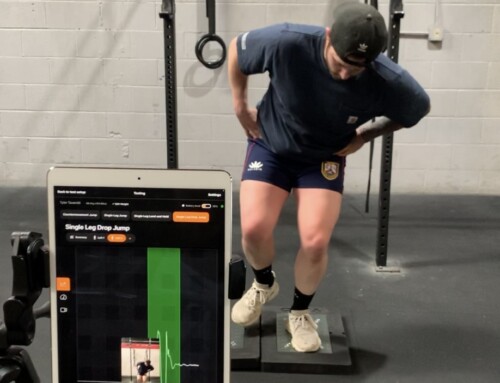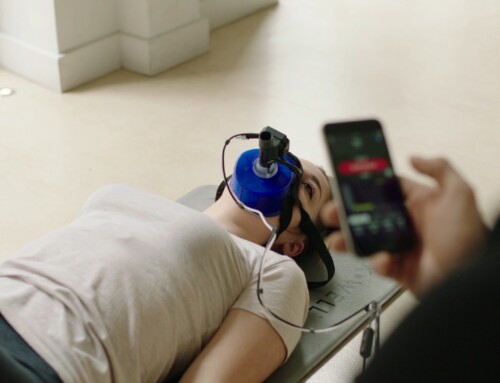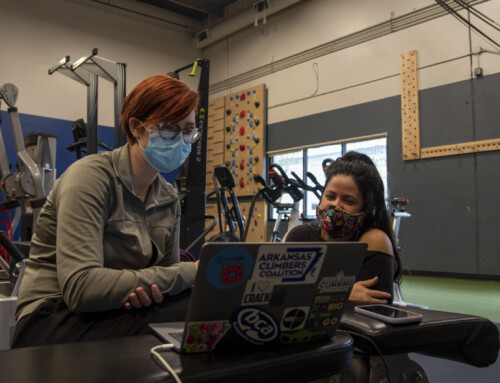Personal Experience is the Best Education
Blog about a pro triathlete, physical therapist/coach’s return to run after a hip injury.
Ouch, that didn’t feel awesome. Oof, that step wasn’t any better. Ummm, some help over here please?
Let me introduce myself before we dive into the mistakes, hubris, and overarching issues that led to me not being able to bear weight on my left leg moments after a race in early September of 2023. My name is Evan Price, I’m a Doctor of Physical Therapy with Evolution Healthcare and Fitness where we specialize in the treatment of endurance athletes. I also, am a triathlon coach, as well as a professional triathlete myself racing on the North American Ironman circuit since 2019. I believe I’ve been lucky enough to experience endurance sports from many angles: the athlete, the coach, the rehab after injury, the prehab, and the psychology of it all from beginners to seasoned pros.
So, how did I end up in this predicament? A month of intense run training, a 50k ultra race where I fell, followed by a half Ironman two weeks later may have been the culprit. But I thought I was invincible? I fuel well, sleep 8-9 hours when I can and have been training at these volumes for years. Limping with the support of my bike back to my car moments after one of my best races of the year, however, I was questioning everything. There’s an old saying that PTs make the worst patients (or at least I think we do). We may not like to admit it, but most of us have an invincibility syndrome that makes us believe we’re above the rules, limitations, and guiderails we impose on those we treat or in my case coach. I flew a little too close to the sun and now I was paying the price. There is no cheating or hacking recovery. You either respect the process, or you end up limping back to your car looking like someone who maybe shouldn’t be trying to drive right now.
In the following 3 days after the race, I was unable to bear weight without sharp pains in my left hip, near a dangerous referral pain spot. I was trying to not let the mind wander too far negatively, but I was almost certain I had a stress fracture in my femoral neck and found a pair of crutches for the rest of the week prior to imaging. One rushed limp across an airport to catch a flight and I was back home in the PNW after a painful few days. I was starting to bear weight again, once back home, and with a compensated limp felt that I may be able to skate by and be back running in a week. Although it wasn’t a stress fracture like I had originally feared, it was a labral tear along with possible hip flexor tendinopathy (tougher to diagnose). My hip was actively trying to defend itself from loading and I was willing to listen to it. In my head I knew this at least wasn’t going to mean two to three pins in my femur, but it meant potentially a more complex and unpredictable return to what I love to do every day.
Now, to the more interesting part of this process. How are we going to rehab this issue and get back in time for a race in December (little over two months away) without risking too rapid and rushed a return? I might be a PT that works with runners and have seen this injury progression many a time, but we do make terrible patients ourselves. So, with this in mind I came up with a plan and had those around me pick it apart, thank you Jake Stout and Matt Walsh at Evolution healthcare and fitness.
The plan had some key points and guidelines in what we’ll call Phase 1 of return to run baseline: 1) strength and endurance in the single leg stance with rotational focus 2) Hip flexor strength under long lever strain 3) Utilizing our BOOST treadmill for early entry back to running.
- The labrum in the hip works as a fibrocartilage ring that secures the femoral head in place while we put pressure through this joint. Rotational capacity is huge for this tissue and as it receives damage, or excessive pressure over the years we may be tempted to stop activities that challenge it in different planes of motion. The classic example I see is an aging runner who decides to never move any direction but front to back. In theory, this never challenges the labrum to adapt in multiple planes like it is made to do and can lead to what we all love to brand “overuse injuries” which in my book generally just means we stopped trying to do other activities outside of just running. In my own personal case, I ran a 50k trail race on technical trails, fell, and then return quickly to my straight line running without ever addressing the fact that I was very weak and unstable on those trails. Hindsight is 20/20, but I should’ve seen something like this coming.
- Now the anatomy of this type of injury can be a bit complicated. The labral tear in runners is nothing uncommon (studies have shown 35-55% of the active population can experience this issue). How the body responds to a labral tear is what can cause issues with returning to run. In my case, my Psoas tendon and I’m sure its surrounding buddies all decided to limit my hip extension causing a pretty comical limp. As this loosened in the second week allowing more hip extension through my gait, Matt Walsh and I found that I had a very large difference in Hip Flexion torque strength. We used a supine test which found around 30% difference in force between my Left and Right legs from a “long lever” position. This could explain why running or even walking fast was not feeling great now. This would need to improve for weight bearing running to not be significantly compensated.
- So, how do we slowly progress back to running without just jumping into it and shocking the system. The BOOST supported treadmill system is a game changer for runners returning from this type of injury (as well as many other types of injuries). In this case however, my labrum didn’t want to tolerate the full pressure of running, and my hip flexor couldn’t produce enough force to carry my momentum in extension. Without the BOOST this could’ve meant a month of more without running. With the BOOST I was able to start only 10 days out from injury with 20% of my weight taken away and the support I needed to start the running progression back without significant pain or compensation.
Regardless of the injury, in endurance sports no recovery or rehab process is linear. Unfortunately, timelines are never guaranteed, and the factors and variables make answering the timeline question always sound “wishy-washy”. But I hope in this blog series I can show a window into one of those processes start to finish. There is no guarantee I’ll be able to race again in December, but I’m sure either way I will learn and hopefully be a better athlete, coach, and clinician on the other side.
References:
Curr Rev Musculoskelet Med. 2009 Jun; 2(2): 105–117.
Published online 2009 Apr 7. doi: 10.1007/s12178-009-9052-9
Makovitch, S.A., Mills, C.A. & Eng, C. Update on Evidence-Based Diagnosis and Treatment of Acetabular Labral Tears. Curr Phys Med Rehabil Rep 8, 342–353 (2020). https://doi.org/10.1007/s40141-020-00295-z





